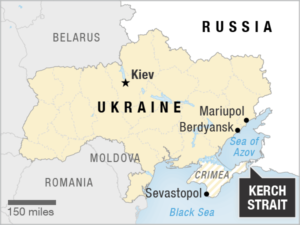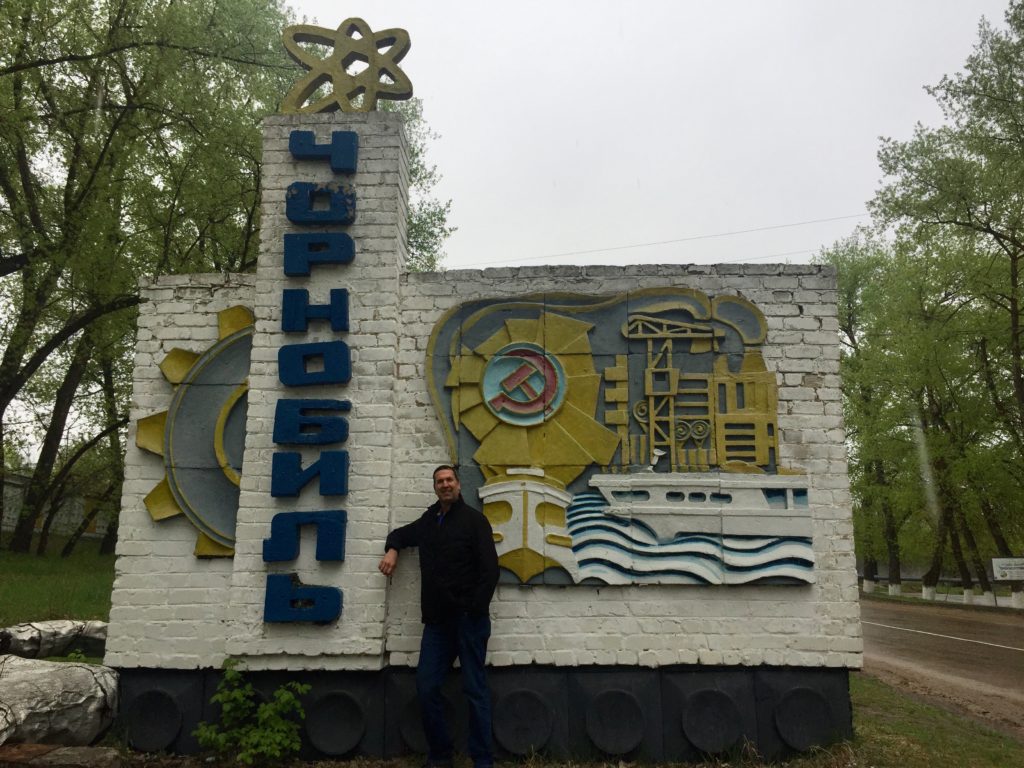
It’s March 2019, and I’m in my apartment in Mykolaiv, thumbing through my Lonely Planet Ukraine guidebook, hunting for one last adventure to pair with my Peace Corps medical checkout—a final hurrah before my service wraps up. Of all the destinations calling my name, one stands out above the rest: Chernobyl. Yep, that Chernobyl. The infamous site of the world’s worst nuclear disaster isn’t just a place on the map, it’s a magnetic, haunting pull I can’t ignore.
During my physical—and, oddly enough, right as Dr. Valery is reviewing my history of thyroid issues—I excitedly mention that I’m planning to cap off the weekend with a tour of Chernobyl. “Why?” he asks, giving me a look that says are you out of your mind? “It’s very dangerous.” I shrug and try to defend myself, explaining that I’d done some research and, apparently, the radiation exposure is about the same as getting a dental x-ray. “Lots of people go,” I add, trying to reassure him—and maybe myself. “I mean, how could I spend 27 months in Ukraine and not go to Chernobyl?”
As usual, I’m staying at the Dream House hostel in Kyiv’s charming old Podil district. It’s Orthodox Easter weekend and spring has arrived in full force. Birds are singing, flowers are blooming and the city feels freshly alive. On Friday, April 26, I kick off the day with a coffee and an espresso (because why not?), then head out for a leisurely stroll to the Ukrainian National Chernobyl Museum. And wouldn’t you know it, it’s the 33rd anniversary of the 1986 disaster, and admission is free. What luck. I’m first in line when the doors open, eager to dive into all things Chernobyl.
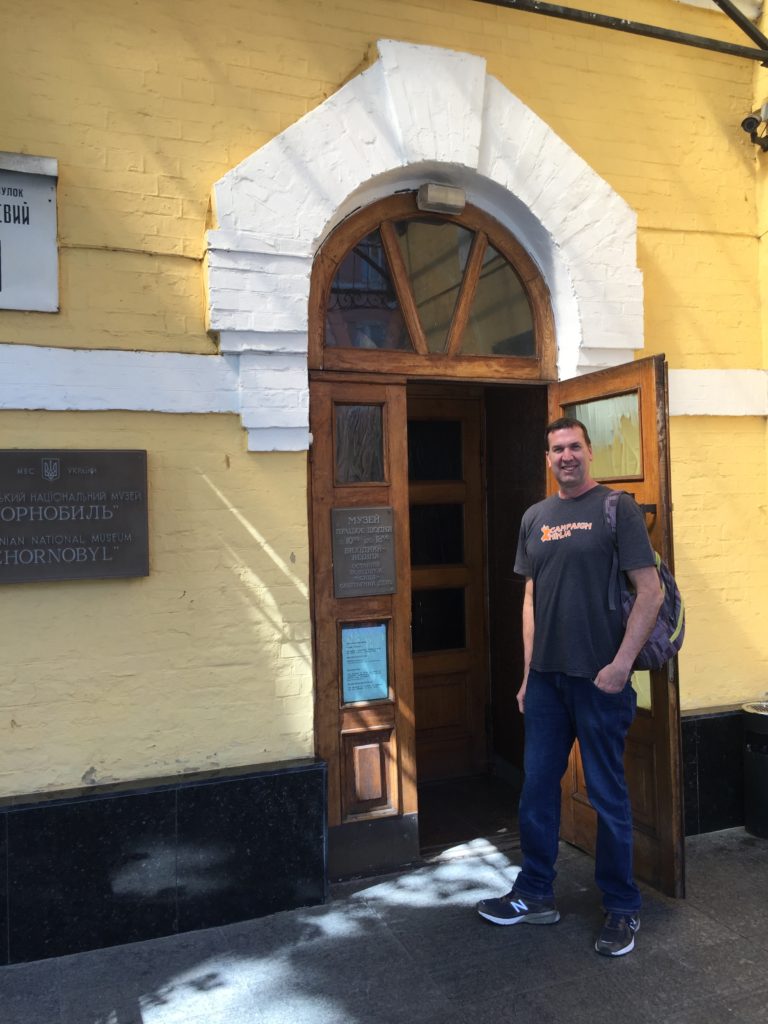
Though the museum is small, its three exhibition halls are packed with enough compelling information to keep me hooked for two hours. As I move from one exhibit to the next, I try to rewind my memory back to 1986. I was a college freshman then—just 20 years old. Did I truly grasp the scale of the disaster at the time? I linger over the old media archives, reminded of how the Communist party officials delayed reporting and tried to bury the truth. But what truly stuns me is the story of the first responders, the “liquidators.” Some of them were exposed to radiation levels equivalent to 160,000 chest x-rays while battling fires and clearing toxic debris. Over 100 quickly developed radiation sickness, and 34 of them died.1 Despite the heavy subject matter, the museum delivers a clear and honest account of the tragedy. It’s the perfect prelude to tomorrow’s visit to the Chernobyl Exclusion Zone—the 20-mile radius of radioactive stillness that I’m now even more eager to explore.
On Monday morning, I’m up bright and early to catch the city bus from Podil to Independence Square in downtown Kyiv, where I’m scheduled to check in with the SoloEast tour guide at 8:00 a.m. I arrive with enough time to grab a coffee and a Danish, then claim a seat at the back of the charter bus and get comfortable. As the bus fills up, I strike up a conversation with a group of grad students from the UK. They’re pumped with excitement and their energy is contagious. “Man, I can’t wait to see Chernobyl,” one of them says, grinning. Everyone agrees. “When we get back to Kyiv tonight, I think I’m gonna get right pissed.” Yes dude, I think, that’s the spirit! We rumble across the bridge spanning the Dnieper River, treated to expansive views of the sprawling Ukrainian capital. Once we hit the highway, our guide gives us a preview of what to expect at the Chernobyl Exclusion Zone. Then she starts a BBC documentary for the ride—Burying Chernobyl. It’s a fascinating film chronicling the 20-year effort to build the colossal New Safe Confinement structure, designed to encase the hastily constructed sarcophagus that still holds back the deadly radiation leaking from reactor No. 4.
Gazing out the window, I’m calmed by the dense, green woodlands surrounding the mostly empty rural road to Pripyat. We pass lonely village homes with chickens in the yard. A man fishes from a river. A woman wearing a headscarf tends her garden. Although they were forced to evacuate after the explosion in 1986, I can understand their desire to return to such a beautiful, tranquil place.
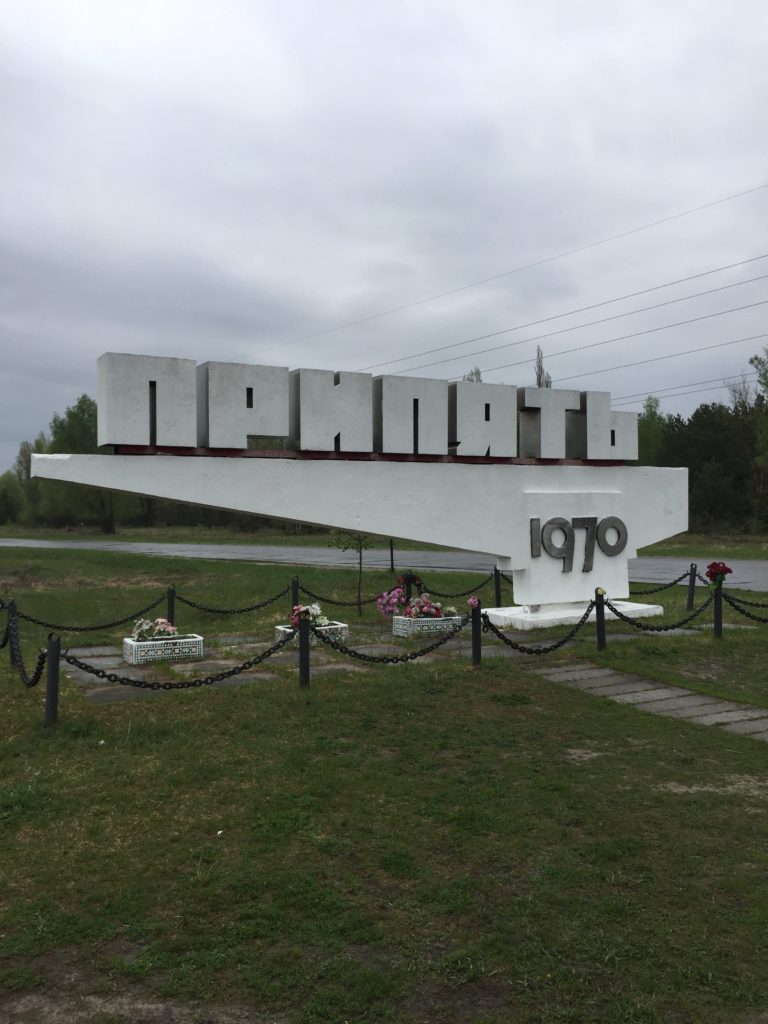
We arrive in Pripyat, the town built to house Chernobyl workers and their families. Security officers board the bus to check our passports. Once cleared, we proceed to make several stops, exiting the bus to get the first of many photo opportunities. The first is the Pripyat 1970 monument, commemorating the founding of the town. I was just four years old then. Nearly 50,000 people lived there at the time of the accident. Today it’s a ghost town and will remain uninhabitable for 20,000 years.
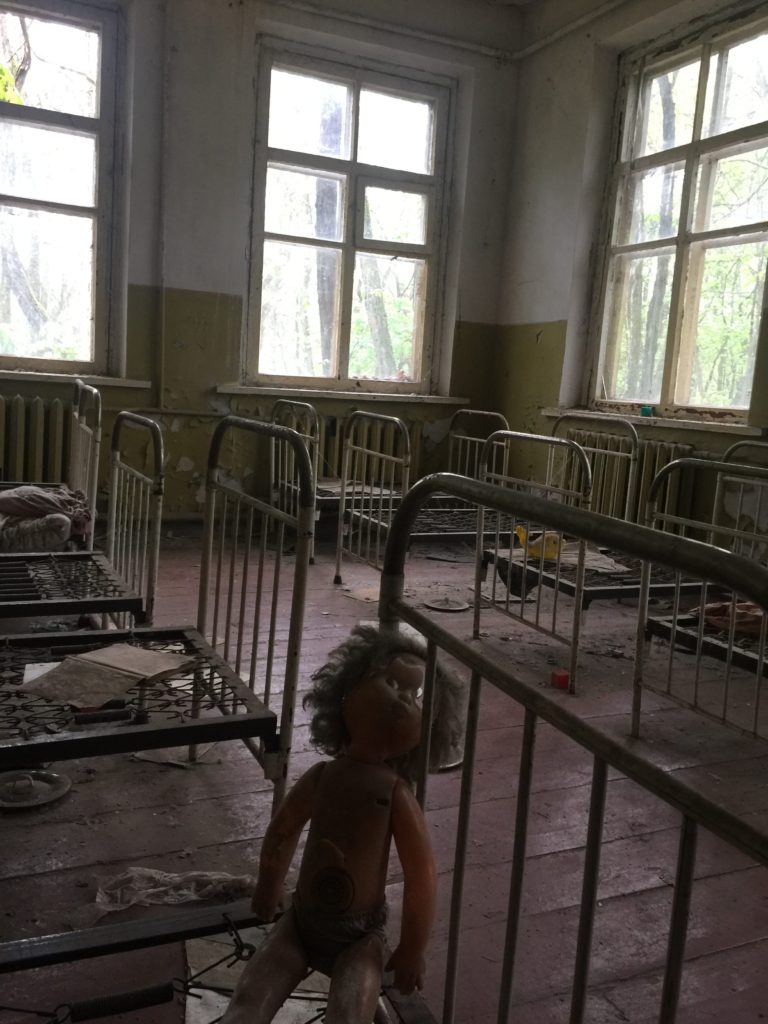
We go to a former elementary school and a hospital. In random places, yellow warning signs point out radiation hot spots, and dosimeters start going crazy. Our guide sets her stopwatch for 10 minutes. In certain areas in the zone, time is limited as radioactivity levels are still high. Inside the school, desks are still in place and books from the day are strewn about among broken window glass. Even more eerie are the omnipresent mutilated dolls that, though most likely staged, conjure the nightmare of the 1986 disaster and the residents leaving everything behind in the subsequent evacuation.
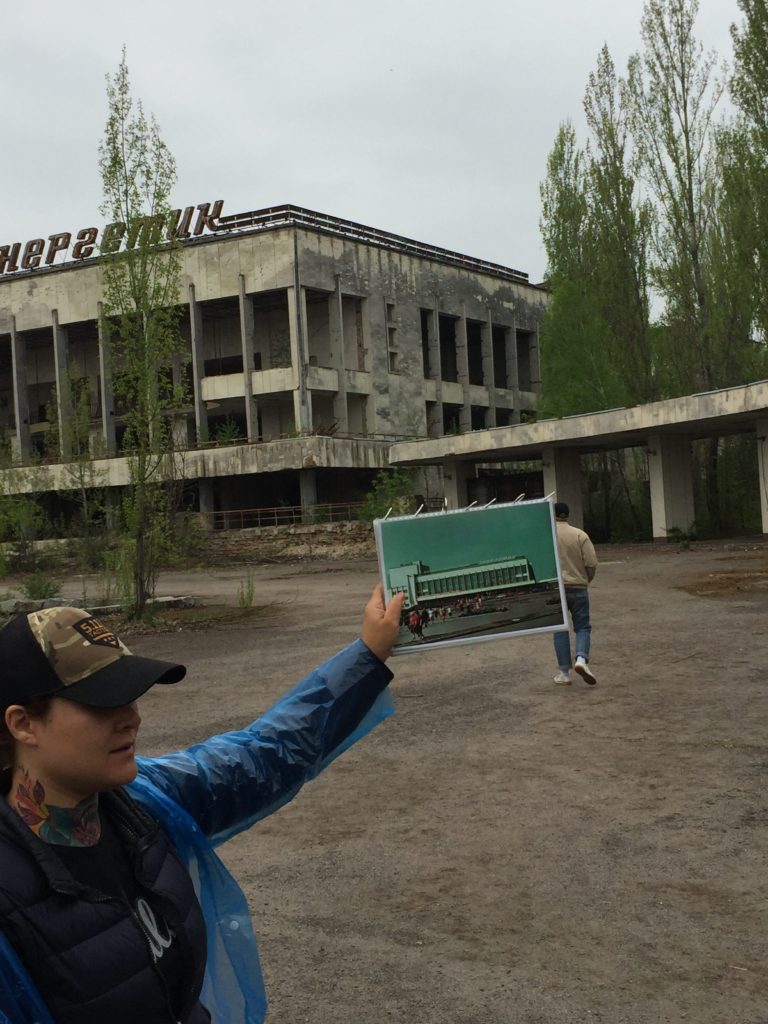
Strolling through the abandoned, deteriorated city, we come to the famous amusement park, with the iconic Ferris Wheel and bumper cars, frozen to a standstill in rust and overgrowth. Everybody jockeys for the perfect shot. Our guide holds up a photo album of pictures taken during Pripyat’s heyday of its football stadium, the convention center hotel, the yacht club and the Palace of Culture. The city built to be the model of Soviet Union ingenuity and modernity now looks post-apocalyptic with nature taking over.
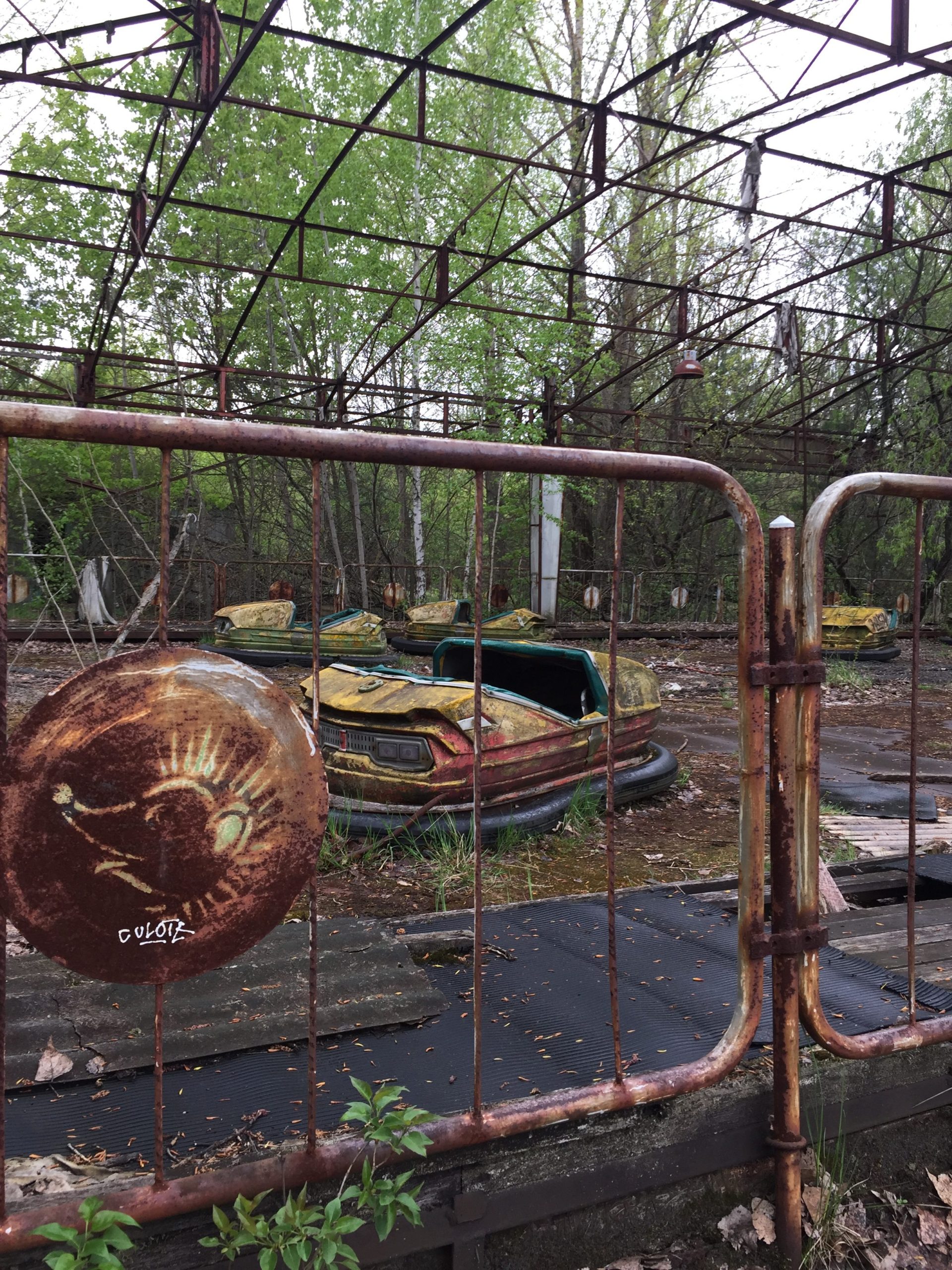
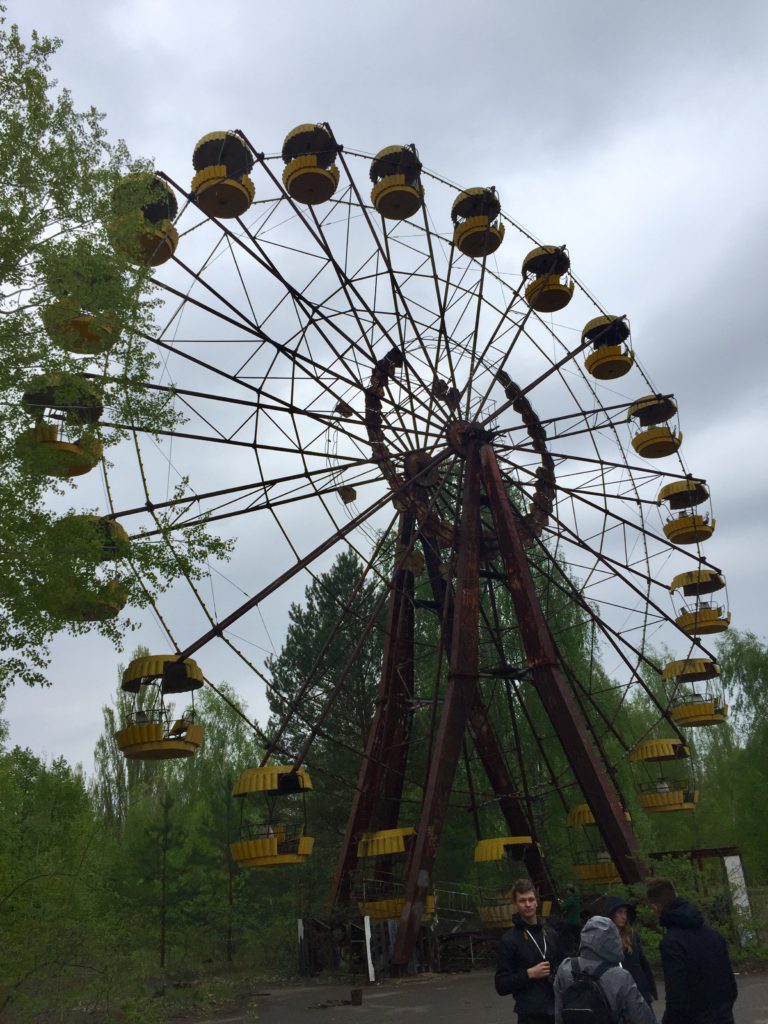
Back on the bus, we travel three miles to the Chernobyl Nuclear Power Plant. The New Safe Confinement structure, taller than the Statue of Liberty, dominates the landscape. It looks like a gargantuan silver airplane hangar and gleams in the sun. When it was finally moved into position, inch-by-inch on rails, it became the largest object ever to be moved on land by humans. Just outside the structure, we get pictures taken in front of the reactor shelter. Here, our guide sets her timer for only 7 ½ minutes.
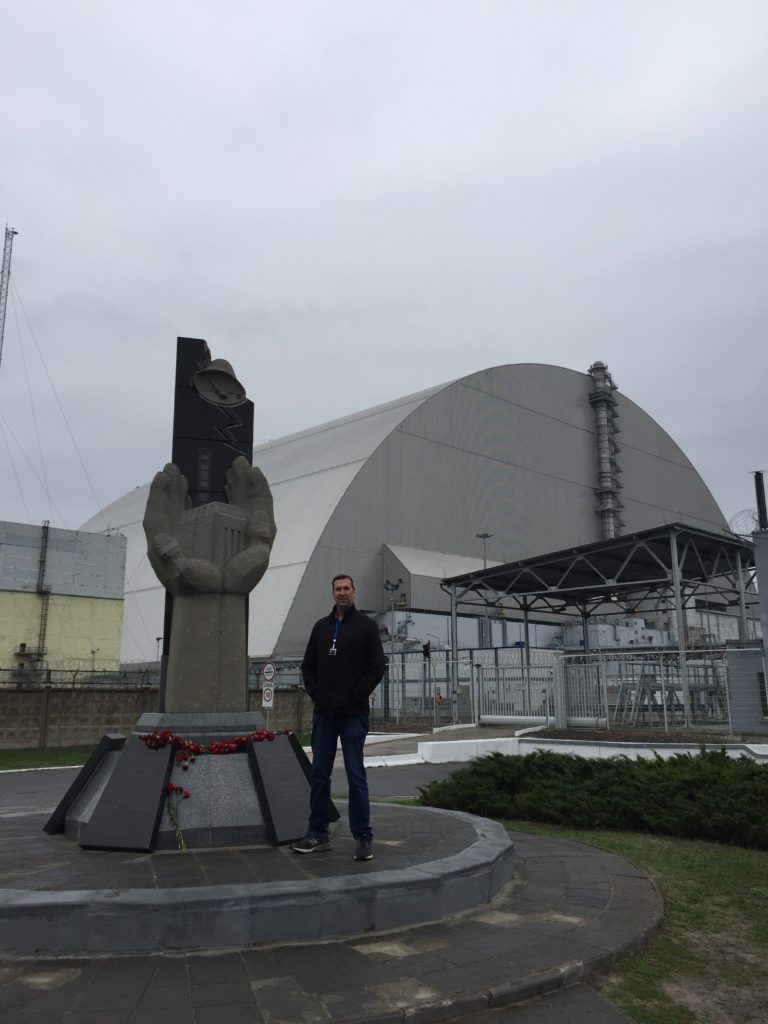
After a full day of seeing the key sights, our final stop is the zone’s exit checkpoint. Everyone files into a room to get measured for radiation exposure. No one alarms and we’re back on the road to Kyiv.
Yes, seeing the site of the world’s worst nuclear disaster was strange, very interesting and maybe a little risky. It was proof positive of nature’s resilience. I was glad to cross that experience off my Ukrainian bucket list. And now, every time I get an x-ray, I think of Chernobyl.
1 (Saplakoglu, Yasemin. 2019, May 27. “How Did Radiation Affect the ‘Liquidators’ of the Chernobyl Nuclear Meltdown?” Live Science.)
